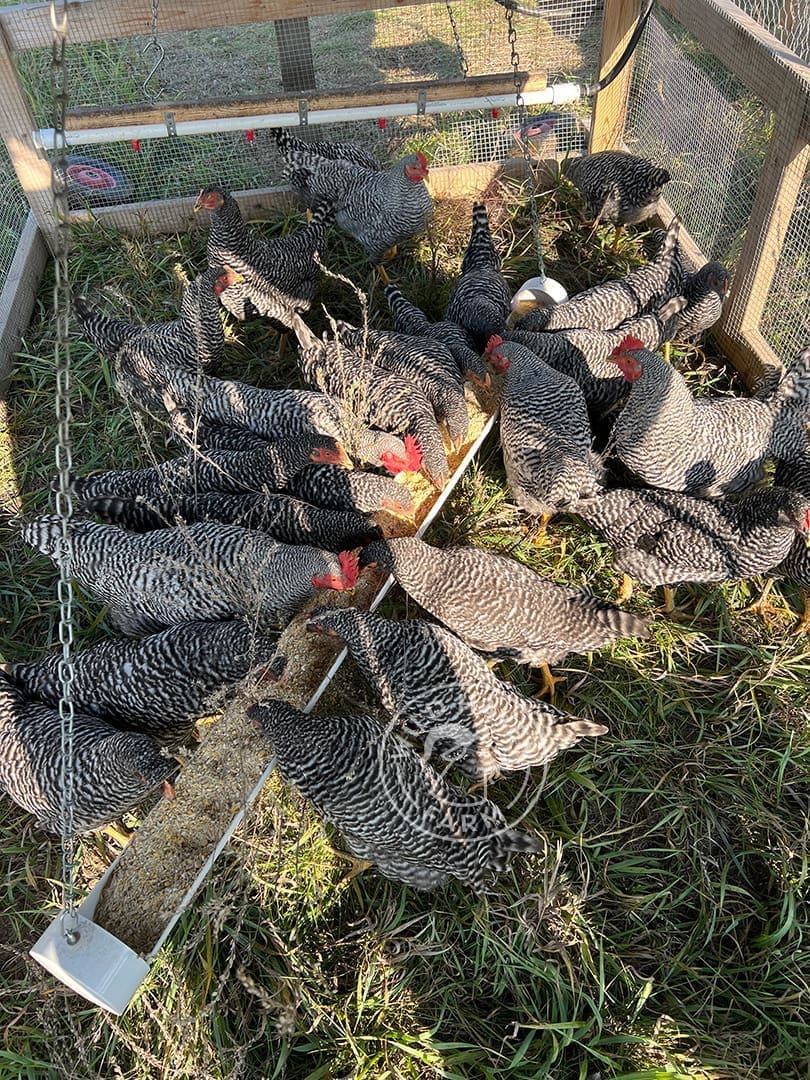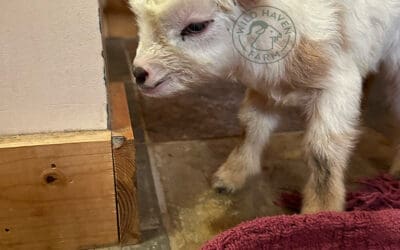So this is a big reason why we founded Wild Haven Farm. Perdue Farms, LLC, one of the top four processors of poultry in the United States, has petitioned the USDA[mfn]https://www.fsis.usda.gov/policy/petitions/petition-submitted-perdue-farms-llc[/mfn] to lower the standard for “pasture raised” poultry. This will have a negative effect on the welfare of the birds, decrease nutritional value, and erode the high standard of pasture-raised poultry farming.
Background
Purdue Farm LLC is one of the big four poultry processors in the United States. The market (all of us) have been pushing for more food that is “green/sustainable/humane/healthy/…” and Perdue heard the call. Unfortunately, when you process over 2 million birds per day[mfn]According to the USDA report for 2022 there were 9,130,700,000 broilers processed that year. That’s 25,015,616/day. Perdue owns 8% of the market so their share is approximately 2,001,249. https://downloads.usda.library.cornell.edu/usda-esmis/files/m039k491c/wm119387d/5138kw352/plva0423.pdf[/mfn] compromises must be made. The petition asks the USDA to redefine “pasture-raised” to mean that the birds spend 51% of their lives on pasture and that pasture be defined as 51% “rooted-in-soil vegetative cover.” By the way, the petition correctly points out that “free-range” is not the same as “pasture-raised.” But that’s another discussion.
This doesn’t seem like a terrible thing to ask the USDA. After all, we need some standards, right? However, 51% is hardly a great standard. It’s really about as minimal as you can get and still mean anything. The reason Perdue, and the industry, want these low standards is very simple. Pasture raising birds is labor intensive when done right. It’s extremely costly to do at the scale Perdue operates at (and keep in mind they are only the 4th largest processor). By limiting the bird’s time on pasture, the producer is able to keep the bird in a brooder or confined environment longer and more cost-effectively manage them. This is simple cost reduction on the part of Perdue and the industry.
The Problem
The problem here is three fold.
- One concern is simply the lowering of the humane standards for the birds who deserve to have a good, healthy life.
- The second concern is the reduction to 51% vegetative cover. This standard allows the producer to use far lower quality and less nutritious ground. Remember that the vegetative cover is a big part of the nutrition of what you eat, that’s why we pasture raise. For Purdue, lower standards are a move necessary in order to produce such large volumes at a low cost.
- The third concern is around the eroding of market perception. Producers who put their chicks on pasture as soon as they are viable (weather determines that up here) and pulls their tractors daily would share the “pasture raised” label with Perdue who has a far lower standard. Essentially, “pasture raised” would become less meaningful.
So what’s the solution?
The direct farm-to-consumer model
We believe the solution is for consumers to know where their food comes from. That’s why we sell our eggs as a CSA (community-supported agriculture). Reducing the levels between the farmer and the consumer returns more money directly to the producer of the food which allows them to maintain high standards.
Consumer awareness
We are always encouraging our customers to come visit the farm. We know that not everyone who enjoys a roasted chicken dinner wants to come participate in processing day. But we put the invitation out there both to help educate our members and for transparency. We do hope everyone comes out to the farm once just to see the birds living on pasture in their tractors. Talk to your farmer and learn how they treat their animals and why.
Consumer knowledge. It’s vital that consumers be alert for “greenwashing” and expect it when dealing with massive corporations. Buy local and question everything.
More farmers
We need to rebuild local farming infrastructure. In 1950 there were 1,636,705 poultry farms in the US with an average of 355 birds per farm. By 2012 there were just 32,935 farms with an average of 256,067 birds per farm[mfn]https://www.nass.usda.gov/AgCensus/[/mfn]. And things have only gotten worse. We need to support urban chickens and gardens, homesteaders, emergent farmers, and small producers. Again, this is a topic for another discussion.
Summary
We have to try but we may never be able to really regulate morality and ethics into a capitalist industrial system. However, we can act locally and have a major impact. At Wild Haven Farm, we’ll do what we can to help keep you informed. We are always here for tours and talks. Come be a part of the solution!




